#libellus
Explore tagged Tumblr posts
Text
Onyn Ring's book
So, in meeting a demigod, we see that he has a book of presumably prophecies or just about Chikn Nuggit.

I was curious on what it was, so I put it in Google translate

I think it's so cute that he has a book and the name of it is "a little book" :3
79 notes
·
View notes
Text
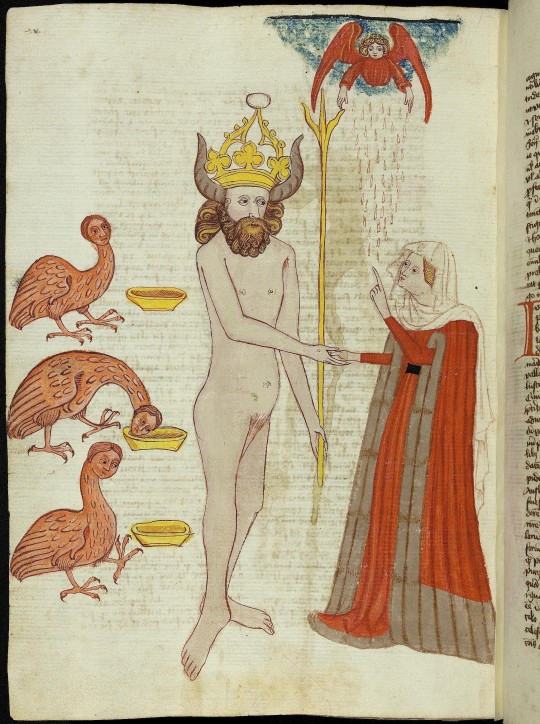
neptune, styx, and the harpies
from a copy of john ridewall's "fulgentius metaforalis" (?), bavaria, c. 1424
source: Vatican, Bibl. Apostolica Vaticana, Pal. lat. 1066, fol. 222v
#15th century#fulgentius metaforalis#john ridewall#libellus de imaginibus deorum#neptune#harpies#styx#mythology#hybrids#gods#medieval art
339 notes
·
View notes
Photo
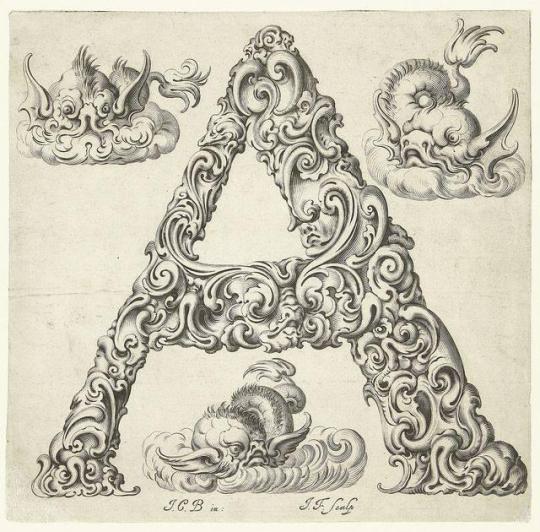
The letter "A" from the Libellus Novus Elemntorum Latinorum, a 17th-century alphabet of organic type.
More here: https://publicdomainreview.org/collection/an-alphabet-of-organic-type-ca-1650 https://publicdomainreview.org/collection/an-alphabet-of-organic-type-ca-1650
169 notes
·
View notes
Text


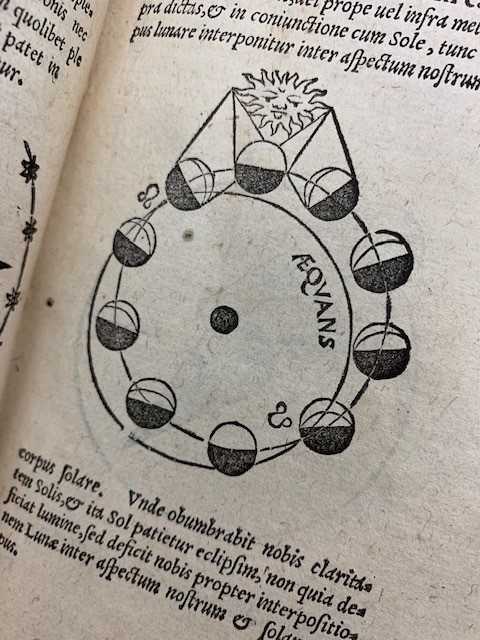
Eclipse(s)!
We are pleased to be positioned on Earth like one of figures in the first picture and will get to experience the 2024 solar eclipse!
These diagrams illustrating solar and lunar eclipses are from a 16th century book of astronomy. For more on this interesting little book (including its volvelles, and an inscription by Swiss Reformed theologian Simon Sulzer) see earlier post here.
Sacro Bosco, Joannes de. Libellus de sphaera : Accessit eiusdem autoris computus ecclesiasticus, et alia quaedam, in studiosorum gratiam edita...Vitebergae : Per Iohannem Crationem, 1558.
127 notes
·
View notes
Text
Latin Literature Tournament - Round 1


Propaganda under the cut!
Pliny Propaganda:
His description of Vesuvius is so fucking cool and important, you guys. It's so cool that "Plinian eruptions" are a thing in volcanology
He writes some neat descriptions of gardens and private horticulture, so he's an important source on Roman aesthetics of domestic design
His letters really are bangers. I love his friendship with Tacitus, and the ghost stories are so fucking fun
Juvenal Propaganda:
I love reading and fighting Juvenal. He is such an asshole and so full of shit (and his poems really are a blast)
That said the man sure can turn a phrase. Bread and circuses, anyone?
Is that a farrago in your libellus or are you just happy to see me
#tagamemnon#classics#pliny#pliny the younger#juvenal#latin#latin literature#latin literature tournament#tumblr polls#tournament polls#bracket#satire#letters#epistolography
50 notes
·
View notes
Text
"One of the main sources regarding the events following [Emperor Louis II of Italy's] death, Andrew of Bergamo’s Historia, has fuelled the idea that the political factionalism in Italy corresponded to political chaos and weak royal authority. This approach has recently been challenged, as it has been shown that Italian factions were extremely fluid and moved by very practical interests: the existence of factionalism in Italy did not mean the weakening of royal authority. Angelberga’s widowhood and her attempts to preserve her wealth fit effectively within this picture and emerge from Andrew’s narrative as well. Andrew reports that Charles the Bald and Louis the German were both called to Italy to claim the imperial rights. This decision was made by an assembly of the local nobles held in Pavia, and presided over by Empress Angelberga […] The Libellus de imperatoria potestate, a political pamphlet produced in Rome at the end of the ninth century, also states that the empress and “sui primates” sent a missive to Karlman. As we have seen, evidence shows that Angelberga had, at this stage, a favourite: Louis the German and his sons. However, this does not imply that she had to maintain this attitude. Louis the German was soon to die, and according to Andrew his sons did not deserve much political consideration. Andrew’s portrayal might be related to his impression that political consistency was not Angelberga’s priority and thus inspired by the fluctuating attitude of the empress. By the time he was writing, probably at the beginning of the 880s, Andrew had witnessed the change in the empress’ political attitude.
Initially, Angelberga’s hostility towards Charles the Bald seemed evident. Her appeal to Louis the German to confirm her properties was contemporary with the coronation of Charles in February 876. It is clear, therefore, that at the time Charles’ victory was not good news for Angelberga. At the same time, however, Pope John VIII, one of Angelberga’s closest friends, supported the West Frankish candidate. The same can be said for the archbishop of Milan Anspert, a relevant figure in relation to Angelberga’s troubled widowhood. In September 875 Anspert had organized what has been defined as “one of the most daring and political acts of his government”: the procession that took Louis II’s body from Brescia, where it had been originally buried, to the church of St Ambrose in Milan. According to Paolo Delogu, Anspert took the body with the aim of claiming “the role of keeper of the royal tradition in Italy, burying him beside King Pippin and Bernard in the church of St Ambrose in Milan”. The representatives of the archbishop sent to transfer the body were the bishops Benedict of Cremona and Garibald of Bergamo, with an entourage of clerics: among them was Andrew of Bergamo, as he reports in the Historia.
This event has been read as a sign that relations between Angelberga and the church of Milan were tense: she wished to keep the body of Louis in Brescia, whereas Anspert had decided to move the royal body to the mausoleum of the kings of Italy. However, this may not have been the case. In March 880 Charles the Fat issued a diploma that confirmed some properties to the monastery of St Ambrose. Among them was the monastery of Santa Cristina in Corte Olona, which, according to the diploma, had been granted to St Ambrose by Angelberga “for the sake of Louis’ soul”. If Angelberga had granted the monastery of Corte Olona to St Ambrose in Louis’ memory, this must have been done after the body had already been moved to Milan. Moreover, the grant must have taken place before March 877, when the empress issued a testament that listed all her properties, because it does not mention Santa Cristina. This exchange between the empress and the diocese of Milan might indicate that the removal of Louis’ body from Brescia happened with the empress’s consent, and that Angelberga’s grant was the result of an agreement between the empress and the Milan clergy led by Anspert.
This shows that the empress was happy to come to agreement with people who, according to the alleged French/German partition, would have belonged to the opposite party. Furthermore, it shows that Angelberga used her royal properties to negotiate alliances and support. After Louis the German died, in August 876, she had no guarantee that Louis’ sons would have been on her side. On 27th March 877 Pope John VIII wrote an enraged letter to Charles the Fat, because, according to Andrew, the latter had been plundering the monastery of San Salvatore in Brescia, in which the empress was living at the time. On the same day the pope wrote to the empress to comfort her for her sufferings. In the letter the pope said that he was doing his best to persuade Charles the Bald, whom he calls “our spiritual son Charles”, to help her, and that the emperor was showing exceptional piety and devotion. This indicates that Angelberga had asked the pope to intercede on her behalf with Charles the Bald, and therefore that between 876 and 877 she was attempting a policy of conciliation towards the winner.
This conciliatory policy is confirmed by the fact that in March 877 she issued her testament in San Salvatore in Brescia. The testament asserted the foundation of the nunnery of San Sisto – formally dedicated to the Resurrection, the holy Apostles San Sisto, Bartolomeo and Fabiano in Piacenza - to which Angelberga assigned all her properties."
Roberta Cimino, Italian Queens in the Ninth and Tenth Centuries (PHD Thesis, University of St Andrews, 2014)
#a lot of this is interpretive/speculative but it's still very interesting#angelberga#9th century#italian history#historicwomendaily#charles the bald#charles the fat#carolingian period
8 notes
·
View notes
Text

Libellus Dauidis Chytraei de Morte, et Vita Æterna (The Little Book of David Chytraeus on Death and Eternal Life) - editio postrema (last edition) - illustratea Epigrammatis D. Georgia Æmylii (illustrated Epigrams of D. Georgia Æmylius - Winterberg - printed by Matthew Welack - 1590
6 notes
·
View notes
Text



Hi!
In these rainy day i took the opportunity to select and review what i’ve accumulated over time!
Every time i Print, i do tests on different papers assemble collage of images!
NOW they are starting to much and i decided to show them !
I call her “Libellus” from samsara’s session print of their latest album!
The colours are even brighter, the salmon Pink paper definitely makes the various shades and combinations stand out!
Limited edition of 7 copies
Are NOW available!!!
#thegiantslab#posterart#limitededition#poster#artprint#handmadesilkscreenprint#illustration#dragonfly#handpulled#print#linkinbio
2 notes
·
View notes
Text


Postponing work by drawing HER!
New final(?) name for her! Sister Libellus, silly little librarian!
#the band ghost#ghost band oc#sister of sin oc#the band ghost fanart#cheated a little bit drawing the background#whatever she’s cute#my art
9 notes
·
View notes
Text


June 25th is the feast day of Saint Moluag of Lismore.
Moluag, whose birth name was Lugaid, was of Irish birth. The monastery at Lios Mòr was founded sometime before his death, which is recorded in AU 592. While a full Vita for Moluag has not survived, there are strong suggestions that one did exist. This can be seen in some of the stories told of Moluag in the Aberdeen Breviary, which coincide very closely with stories in the Libellus de nativitate Sancti Cuthberti, a false Vita of St Cuthbert (this is said because additional Vitae of Cuthbert survive, which are in line with the knowledge of Cuthbert’s life). This includes miracles such as the forging of a bell, and Moluag’s miraculous transportation across the sea upon a stone.
The cult of Moluag (cult here meaning the geographic range within which he was venerated) spread widely, across both the Isles and the Scottish mainland. Place-names associated with Moluag spread from as far as Kilmaluag on Harris in the west to Kildrummy in Aberdeenshire in the east.
There is an interesting story that was recorded by the Scottish Folklorist Alexander Carmichael about Moluag and Columba. According to this story, both Moluag and Columba had their eyes set on founding a monastery on Lismore. Lismore would have been a desirable location due to its size (it’s on the larger side compared to other Hebridean islands) and the amount of arable land that it had. In order to claim the island, they began to race against each other to reach it first and thus win the island for their own. As they raced across the loch they were nearly neck and neck, though Columba started to inch out ahead of Moluag. In order to beat Columba and thus secure dominion over the island, Moluag cut off his pinky finger and flung it from his boat onto the beach, thereby placing himself on the island first. It was after this failure to secure the island (according to legend) that Columba then founded his monastery on Iona, which is much smaller and with significantly less arable land.
Moluag’s foundation of Lismore itself was of high status and importance. This is evidenced through the survival of fragments of the Lismore Cross Slab, which may have stood as much as 2.89m in visible height when it was originally completed. The surviving fragments also show high levels of detail, which would have necesitated the employment of highly skilled craftsmen.
Of further interest is the survival of the Bachall Mór, or ‘Great Staff’ of Moluag, which was recently on temporary display at the National Museum of Scotland. This staff is claimed to have been Moluag’s own crozier, though it has been stylistically dated to the late eleventh or early twelfth centuries. The staff is in the possession of its hereditary keeper, the chief of the Livingstone family. The staff itself is badly damaged, and of its original length, only 0.86m now remains. There is evidence that it was originally encased in metal, (perhaps of copper, silver, or gold), which which is now almost completely missing.
Lismore itself continued to be of high importance well after the death of Moluag. Upon the creation of the Bishopric of Argyll c. 1189, Lismore was the site of the cathedral. The cathedral was later reduced in size to become the current parish church.
A poem was written which mentions him in the Martyrology of Óengus:
Sinchell’s feast, Telle’s feast: Féil Sinchill, féil Telli, they were Ireland’s heights, bátir Érenn ardae, with Moluag pure, brilliant, la m’Luóc glan ngeldae the sun of Lismore in Alba. grían Liss mór de Albae.
9 notes
·
View notes
Text

È PIÙ SACRO VEDERE CHE CREDERE - LO SPLENDORE È UN CERCHIO PERFETTO
Basta appena curvare la torbida linearità della storia per trovare nel cerchio perfetto della perenne verità lo splendore.
Nell'immagine, "Sexta Figura", una delle incisioni realizzate da Matthäus Merian per il ciclo iconografico alchemico associato ai versi del "De Lapide Philosophico Libellus" di Lambsprinck. Il testo, pubblicato per la prima volta nel 1599, divenne famoso soprattutto nel corso del XVII secolo, quando fu incluso nel "Musaeum Hermeticum Reformatum et Amplificatum" (1625 e 1678).
Testo di Pier Paolo Di Mino.
Ricerca iconografica a cura di Veronica Leffe.
Potete trovare questa nota archiviata su:
2 notes
·
View notes
Text
Thank you @libellus-drakena for the huge boost in serotonin ❤️

1 note
·
View note
Text
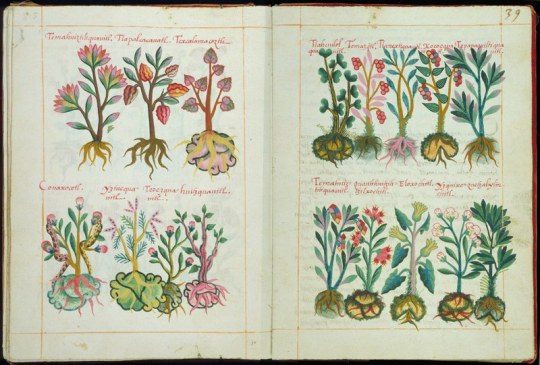
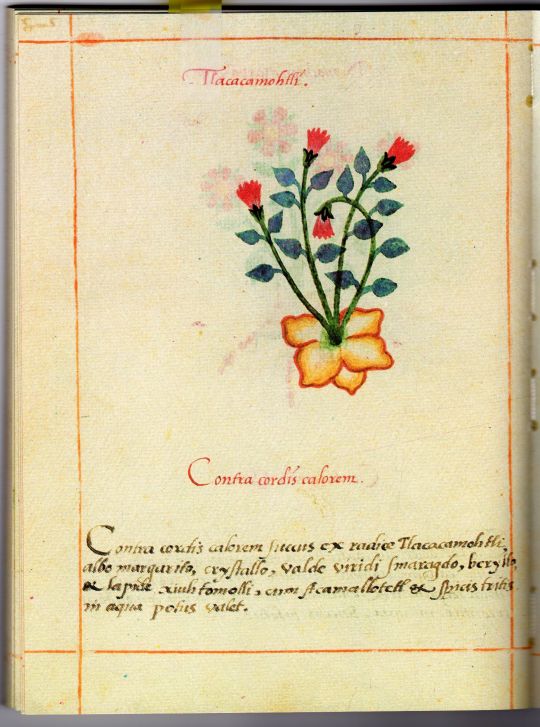
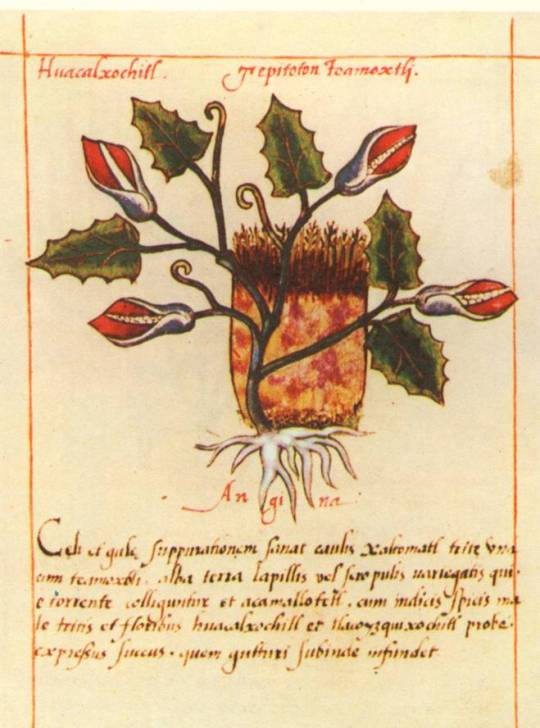
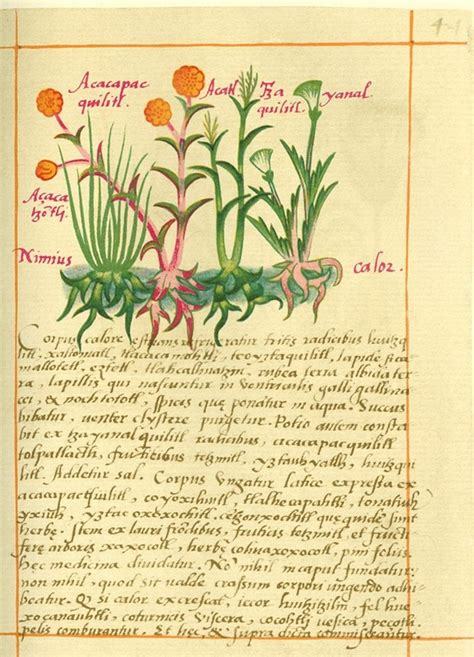
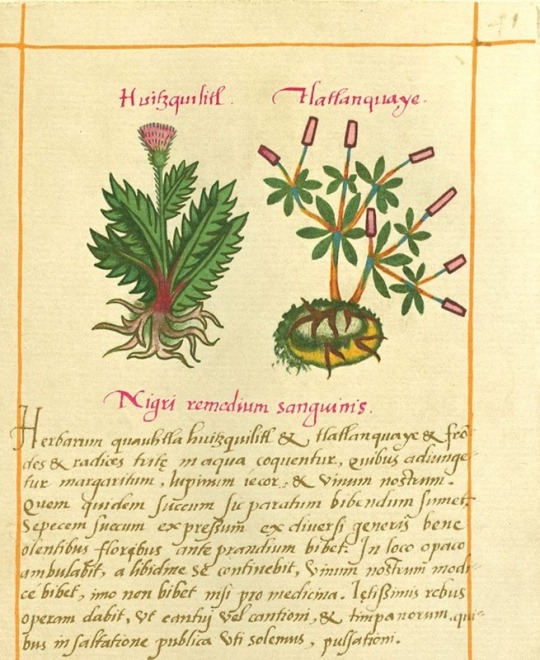
images from the Badianus codex by Martin de la Cruz and Juan Badiano, around 1552.
"The De la Cruz-Badiano Codex is a herbal medicine treatise, written in the year 1552 in the School for Indians of Santiago Tlatelolco, in the early Colonial period. The conception of the book combines both the European and Mexica cosmovision: it contains the descriptions and diagnosis of different illnesses, with the cures, recipes based in the use of Mexican flora, fauna and minerals. [...] The difference between this document and others produced to satisfy the need of understanding the plants of the New World and its uses is that two Indians created and signed it. The manuscript, also named Libellus de medicinalibus indorum herbis (Opuscule of the Indians medicinal herbs), compiles antique indigenous medical practices and depictions of Mexican plants. The authors were Martin de la Cruz, a traditional native physician and Juan Badiano, who translated it to Latin, a professor educated at the College of Santa Cruz for sons of Indian noblemen." (description from this paper).
3 notes
·
View notes
Photo

The letter "A" from the Libellus Novus Elemntorum Latinorum, a 17th-century alphabet of organic type.
More here: https://publicdomainreview.org/collection/an-alphabet-of-organic-type-ca-1650 https://publicdomainreview.org/collection/an-alphabet-of-organic-type-ca-1650
43 notes
·
View notes
Text
I'm sorry, Medieval and Biblical Latinists. It's not your fault your Latin is hideous. I apologize, but I am compelled to go off.
I can't get any further than the title because it is atrocious. Everything about it is wrong.
Commentarii??? First, "Diary" in the title is singular, not plural, so jot that down (or if you read it as masc sg gen, then why tf is it genitive?!). Secondly, "libellus" (little book) would definitely have been a better word choice. "Commentarius" means "notebook" and usually refers to hasty notes that don't matter. You wouldn't call school notes a diary or journal of your life. "Libellus" is also a diminutive, so it would have been cute since it refers to the diary of a child.
"De Inepto Puero"??? De??? Unacceptable. De means "from" but as in "from (a place/position)". If you must use from, it should have been "ex" but that's not the title, is it?! It's "OF a Wimpy Kid". Possessive - genitive. "Inepti Pueri." Get the fuck outta here with your goddamn ablatives, you animal.
And "Inepto"? You're going with "inept" when "timidus" (timid, cowardly, wimpy) is right there??? Are you seriously even trying? Did you google translate this? Timidus is even a significantly more commin word than ineptus. You have to have access to Perseus in the Vatican, don't you?
Libellus Timidi Pueri (The Little Book of the Timid Boy) sounds and reads much better than Commentarii de Inepto Puero (The Commentaries from the Inept Boy).
I'm embarrassed for you. The nerve.
today i found out that if you have library access through ur school, you almost definitely have a copy of the vatican’s latin translation of diary of a wimpy kid and i am currently reading Commentarii de Inepto Puero thank you



45K notes
·
View notes
